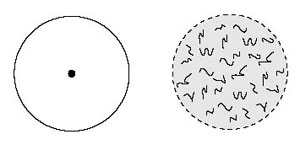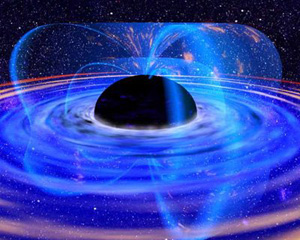Cambridge University’s Steven Hawking was advised to avoid equations and formulae in his infamous 1987 book, A Brief History of Time; purportedly on the basis that every formula printed would equate to a halving of the readership. Einstein, on the other hand, proclaimed that his life was divided between politics and equations. Equations, of course, provide the basis for understanding the universe and their solution could mean the settling of an old wager.
In 1997, Hawking and Caltech cosmologists Kip Thorne wagered a set of encyclopaedias with another Caltech physicist John Preskill, about whether or not information that enters a black hole ceases to exist once it is on the inside. Within this seemingly innocuous bet lies one of the universal great mysteries – is the interior of a black hole changed at all by the characteristics of particles that enter it?

Samir Mathur
Black holes form when a supermassive object, such as a giant star, collapses to form a very small point of infinite gravity, a singularity. Anything that enters the space around the singularity is said to have crossed the black hole’s event horizon, even light cannot re-emerge; hence the black.
Physicists have previously drawn a blank about what lies between the singularity at the core of a black hole and its event horizon, providing much fodder for science fiction writers and fantasists who created alien worlds and time travel beyond the event horizon. Classically speaking, the source of the black hole was considered irrelevant; the region within the event horizon would be devoid of structure.

The conventional black hole (left), Mathur’s stringy fuzzball (Credit: Samir Mathur)
However, the quantum world of modern physics presents scientists with a paradox when it comes to black holes. The kind of uniformity thought to exist within the event horizon violates the quantum mechanical law of reversibility: We must be able to trace the end product of any process back to the conditions that created it. That includes the process that makes a black hole. But, if all black holes are uniformly the same inside, then no black hole could theoretically be traced back to its unique origin. All the information about the particles that formed the black hole is lost the moment it forms.

Artist’s conception of matter swirling around a black hole (Credit: NASA)
Hawking has, on the basis of decades of working with the equations, previously suggested that particles that cross a black hole’s event horizon would have no effect whatsoever on the black hole; they would simply be swallowed and forgotten. But, Hawking’s early work would violate the reversibility law of quantum mechanics. This has given rise to the so-called information paradox, which has remained high on the physicists’ agenda and left them at a loss for an explanation. Now, physicists at Ohio State University have proposed a solution using string theory, a theory which holds that all particles in the universe are made of tiny vibrating strings.
Samir Mathur and his colleagues have derived an extensive set of equations that strongly suggest that information certainly will persist within a black hole’s event horizon. Instead of existing in isolation as it does prior to crossing the event horizon, however, the information will be bound up in a giant tangle of strings that fills a black hole from its core to its surface. The new findings suggest that black holes are not the smooth, featureless entities that Hawking and his peers had previously demonstrated. Instead, they are, in the parlance of popularised science – stringy fuzzballs.
There is obviously a lot more to Mathur’s equations than stringy fuzzballs. String theory not only has strings, it also has ‘branes’, which are multidimensional sheets (strings are a special case – a one-dimensional sheet), Mathur explains. The black holes in string theory are made by binding together strings and branes in a rather complicated manner described by Mathur’s equations. His work studied in detail specific cases of such bound structures. Starting with the simplest, he and his colleagues found that instead of being small these bound structures swell and become large. Assuming that the same happens for all black holes, then the picture drawn in Mathur’s paper will hold true.
Mathur, however, suspects that Hawking and Thorne won’t be particularly surprised by his findings. I think that most people gave up on the idea that information was destroyed once the idea of string theory rose to prominence in 1995, Mathur explains, It’s just that nobody has been able to prove that the information survives before now.
Mathur’s conjecture suggests that strings continue to exist inside a black hole; the characteristics of strings depend on the particles that made up the original source material. This implies that each black hole is as unique as the star, planet, or galaxy that formed it. The strings of anything that crosses the event horizon will persist once inside and so remain traceable as well. A black hole is not an information void after all – it could theoretically be traced back to its original conditions. Information survives.
Further reading
Nuclear Physics B, 2004, 680, 415-449
http://dx.doi.org/10.1016/j.nuclphysb.2003.12.022
The Lucasian Professor of Natural Philosophy, Cambridge: Stephen Hawking
http://www.hawking.org.uk/home/
The Feynmann Professor of Theoretical Physics, Caltech: Kip Thorne
http://www.its.caltech.edu/~kip/
The John D. MacArthur Professor of Theoretical Physics, Caltech: John Preskill
http://www.theory.caltech.edu/people/preskill/
Professor of Physics, OSU: Samir Mathur
http://www.physics.ohio-state.edu/directory_pages/detail.php3?id=235
Suggested searches
Black holes
String theory